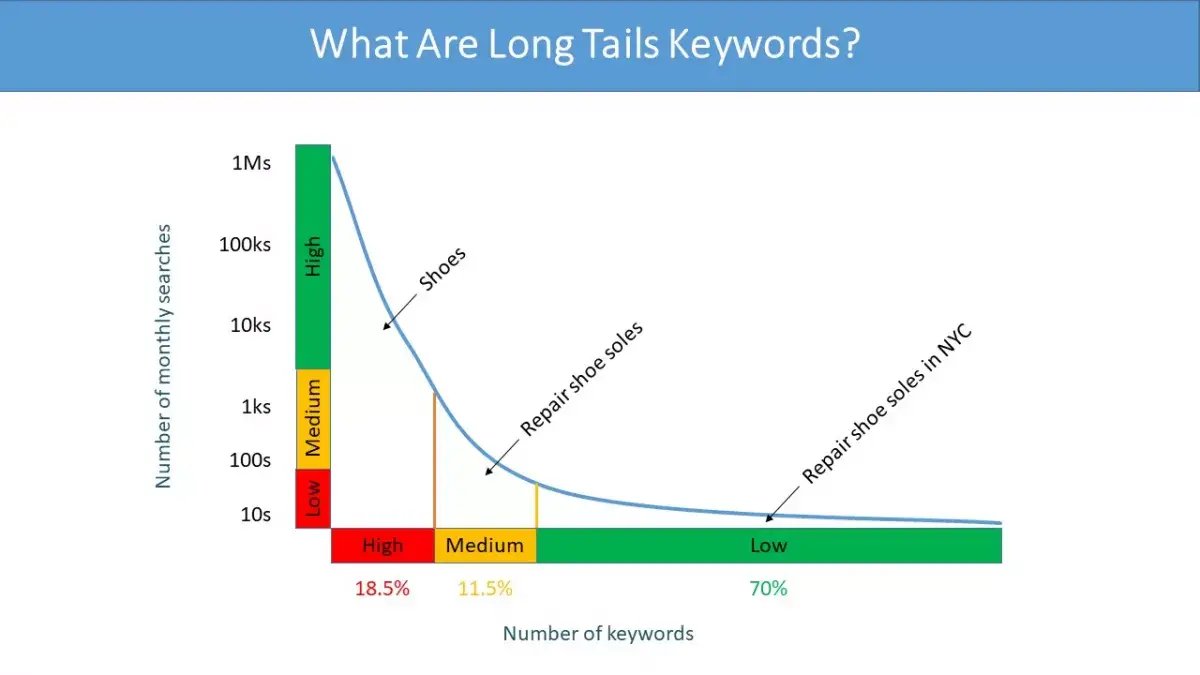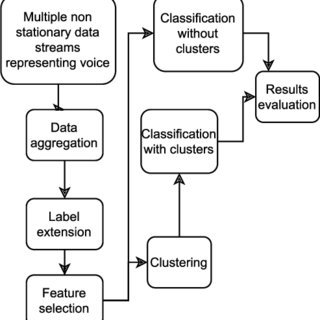Unlocking the secrets of successful content optimization is akin to piecing together a captivating jigsaw puzzle. With each keyword representing a vital piece of the intricate picture, brands are stepping into an exciting realm of digital marketing where performance is finely tuned. Welcome to the realm where words hold immense power – the art of decoding the keyword puzzle. As we embark on this enlightening journey, we will delve deep into the labyrinth of content optimization, equipping you with the knowledge to masterfully craft compelling content that captivates audiences and wins the favor of search engines. Get ready to explore the inner workings of this enigmatic art, as we unveil the hidden treasures that lie within the realm of keyword-driven content creation. Prepare to unravel the code, for the mastery of content optimization awaits.
Table of Contents
- Understanding the Importance of Keywords in Content Optimization
- Unveiling the Secret to Effective Keyword Research and Analysis
- Unlocking the Power of Long-Tail Keywords for Improved Content Optimization
- Implementing the Best Practices for Keyword Integration in Content Writing
- Q&A
- Wrapping Up

Understanding the Importance of Keywords in Content Optimization
In the digital realm, keywords hold the key to unlocking the treasure trove of online visibility and success. Whether you’re a beginner or a seasoned pro, is essential to master the art of attracting and engaging your target audience. So, let’s embark on an exciting journey to decode the keyword puzzle and empower your content optimization skills.
1. Enhancing Discoverability: Keywords act as signposts that guide search engines and internet users to your content. By strategically incorporating relevant keywords, you increase the chances of your website or blog appearing in the top search results. Just like a well-placed map in a maze, keywords provide a sense of direction for your audience, leading them directly to your digital doorstep.
2. Establishing Relevance: Imagine you’re hosting a dinner party, and you want to make sure your guests are impressed with your culinary skills. Similarly, when crafting content, you want to ensure it resonates with your target audience. Keywords play a pivotal role in establishing relevance. By choosing the right keywords that align with your niche, you create content that speaks directly to the needs, interests, and pain points of your target audience. This, in turn, fosters a deeper connection, trust, and loyalty – making your content a go-to resource for those seeking valuable information in your domain.
So, whether you’re just dipping your toes into the vast ocean of content optimization or looking to enhance your existing skills, remember that keywords are the compass that guides your digital success. With a strategic and mindful approach, they can help you navigate the dynamic landscape of online visibility, giving your content the wings it needs to soar to new heights. Happy keyword hunting!
Unveiling the Secret to Effective Keyword Research and Analysis
When it comes to mastering the art of content optimization, one key aspect that can make or break your success is keyword research and analysis. The secret to unlocking the potential of your content lies in selecting the right keywords. But what exactly is keyword research and analysis? Let’s dive into this keyword puzzle to understand the intricacies and unveil the secrets that will help you optimize your content like a pro.
1. Master the basics: Begin your keyword research and analysis journey by understanding the fundamental concepts. Keywords are the words and phrases that users type into search engines when looking for information. By strategically incorporating these keywords into your content, you increase its visibility and attract organic traffic to your website.
2. Tap into keyword tools: There are a myriad of keyword research tools available that can simplify your keyword research and analysis process. Tools like Google Keyword Planner, SEMrush, and Moz Keyword Explorer can provide valuable insights into search volume, competition, and related keywords. Utilize these tools to build a strong foundation for your content optimization strategy.
3. Competitive analysis: Analyzing your competitors’ keywords can provide a wealth of information and inspiration for your own keyword strategy. Take note of the keywords they are targeting and identify any gaps or opportunities that you can capitalize on. Remember, the goal is not to copy your competitors, but rather to gain insights and develop a unique keyword approach.

Unlocking the Power of Long-Tail Keywords for Improved Content Optimization
Long-tail keywords, often overlooked by beginners, are the hidden gems of content optimization. While generic keywords may attract high search volume, they fail to capture the attention of specific audiences. Long-tail keywords, on the other hand, are more precise and target niche markets, allowing you to generate quality leads. Imagine you are a wedding planner. Instead of targeting the broad keyword “wedding planner,” you could use long-tail keywords like “affordable wedding planner in [your city]” or “best wedding planner for outdoor weddings.” These specific phrases not only attract potential clients who are actively searching for your services but also reduce the competition.
Furthermore, long-tail keywords help improve your website’s visibility and increase organic traffic. When you seamlessly integrate these keywords into your content, search engines favor your website, making it more likely to appear in relevant search results. While generic keywords struggle to compete with established websites, long-tail keywords give your website a fighting chance. With less competition, your content has a higher chance of ranking higher, leading to increased exposure and potential conversions. Moreover, long-tail keywords can also help you build authority in your niche. By focusing on specific topics and incorporating long-tail keywords, you establish yourself as an expert and gain trust from your audience, ultimately boosting your brand’s reputation.

Implementing the Best Practices for Keyword Integration in Content Writing
Whether you are a beginner in the world of content writing or an experienced wordsmith, effectively integrating keywords into your content is a skill that can make or break your online presence. Like pieces of a puzzle, keywords help search engines understand the context and relevance of your content, ensuring that your website is visible to the right audience. So, let’s unravel the mysteries of keyword integration and dive into mastering the art of content optimization!
1. Research, research, research: Before you even start typing a single word, it’s crucial to conduct thorough keyword research. Understand the search intent behind your topic and identify the keywords that can help you connect with your target audience. Use tools like Google Keyword Planner or SEMrush to explore keyword variations and search volumes.
2. Natural integration is key: Gone are the days of keyword stuffing. Search engines now prioritize high-quality and user-friendly content. Focus on weaving your keywords naturally into your writing, ensuring that they flow seamlessly within your sentences. Your content should read like a captivating story, not a robotic list of keywords.
3. Optimize your headings and subheadings: Headers provide structure to your content and act as signposts for search engines. Incorporate your target keywords into your headings and subheadings, making it easier for both search engines and readers to understand the core topics of your content.
4. Stand out with meta descriptions: Craft enticing meta descriptions that include your primary keywords. These short snippets appear on search engine result pages, giving potential readers a glimpse into what your content offers. Make them irresistible and click-worthy!
Q&A
Q: Are keywords still important in content optimization?
A: Absolutely! Keywords remain an integral part of content optimization strategies and are crucial for enhancing your visibility in search engine results.
Q: How do keywords help in content optimization?
A: Keywords act as a connecting bridge between online users and your content. When you strategically incorporate relevant keywords into your content, it increases the chances of search engines ranking your website higher, attracting more organic traffic.
Q: Is stuffing keywords the best approach for content optimization?
A: No, definitely not. Keyword stuffing, the practice of overloading your content with keywords, is frowned upon by search engines. Instead, it is important to maintain a balanced and natural use of keywords, ensuring that they seamlessly blend into the overall context of your content.
Q: What is the role of long-tail keywords in content optimization?
A: Long-tail keywords are longer, more specific phrases that target a niche audience. They play a critical role in content optimization by allowing you to cater to users with very specific intent. By incorporating long-tail keywords strategically, you can better match user search queries and increase your chances of ranking higher in search results.
Q: How can I find the most effective keywords for my content?
A: Conducting thorough keyword research is key to finding the most effective keywords. Use tools like Google Keyword Planner, SEMrush, or Moz to explore search volumes, competition, and related keyword options. This will help you identify keywords that have higher search volumes with lower competition, increasing your chances of content optimization success.
Q: Should I include keywords in my meta tags and headings?
A: Yes, including keywords in your meta tags (title, description) and headings (H1, H2, etc.) is important for content optimization. These elements provide search engines with important information about your content. However, ensure that the inclusion of keywords is done naturally and does not compromise the readability and user experience.
Q: How frequently should keywords be used in my content?
A: There is no set frequency for keyword usage, as it largely depends on the length and nature of your content. However, it’s generally advisable to aim for a keyword density of 1-2%, ensuring that keywords are evenly distributed throughout the content while maintaining its readability and flow.
Q: Are there any non-textual elements where keywords can be incorporated?
A: Absolutely! Non-textual elements like image alt tags, video descriptions, and URL slugs provide opportunities to include relevant keywords. Optimizing these elements contributes to a holistic content optimization strategy and enhances your chances of ranking higher in search results.
Q: Are there any alternative strategies to keywords for content optimization?
A: While keywords are important, search engines are becoming smarter in understanding user intent. Incorporating relevant and comprehensive content, using semantic search strategies, and leveraging user-focused optimization techniques also contribute to content optimization success.
Q: Is content optimization a one-time process?
A: Content optimization is an ongoing process. It requires constant monitoring and adaptation to changing search engine algorithms and user behavior. Regularly reviewing and updating your content with fresh, optimized elements is essential for maintaining a competitive edge in search engine rankings.
Remember, mastering the art of content optimization involves finding the delicate balance between attracting search engines and engaging your audience with valuable and well-crafted content.
Wrapping Up
In the ever-evolving world of digital marketing, the art of content optimization has become an indispensable skill. In this article, we ventured into the intricate depths of the keyword puzzle, unraveling its mysteries one piece at a time. We learned the power of selecting the right keywords, the art of strategically placing them throughout our content, and the importance of maintaining a delicate balance between optimization and natural language.
Mastering the art of content optimization is no easy feat. It requires a curious mind, a creative spirit, and an unyielding determination to constantly adapt to the ever-changing digital landscape. Yet, armed with the knowledge we’ve acquired in this article, we are now equipped with the tools to decode the keyword puzzle and elevate our content to new heights.
As we conclude our exploration of content optimization, it is crucial to remain mindful of the overarching goal – to provide value to our audience. Keywords are not meant to be a shield or a manipulation tool, but rather a guiding compass that helps us connect with the people we are trying to reach. Our success lies not only in ranking high on search engine results but also in forging genuine connections with our readers and delivering exceptional content that meets their needs.
Let us venture forth with this newfound understanding, embracing the art of content optimization with open minds and open hearts. As the digital landscape continues to evolve, one thing remains certain: the mastery of the keyword puzzle will be an ongoing journey, a puzzle with ever-changing pieces. But with our dedication and willingness to adapt, we can confidently navigate this landscape, leaving behind a trail of engaging and optimized content that resonates with our audience for years to come.

